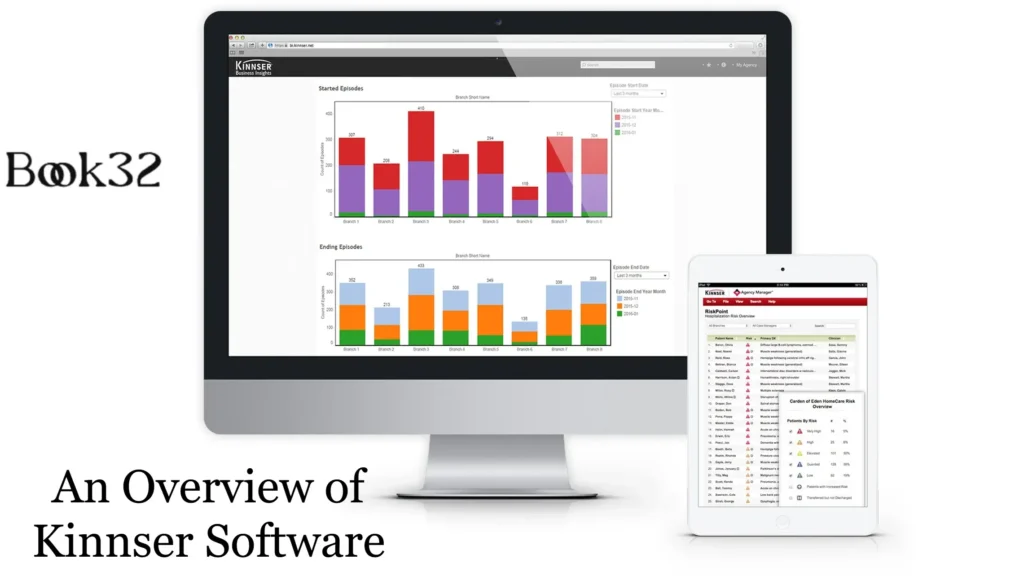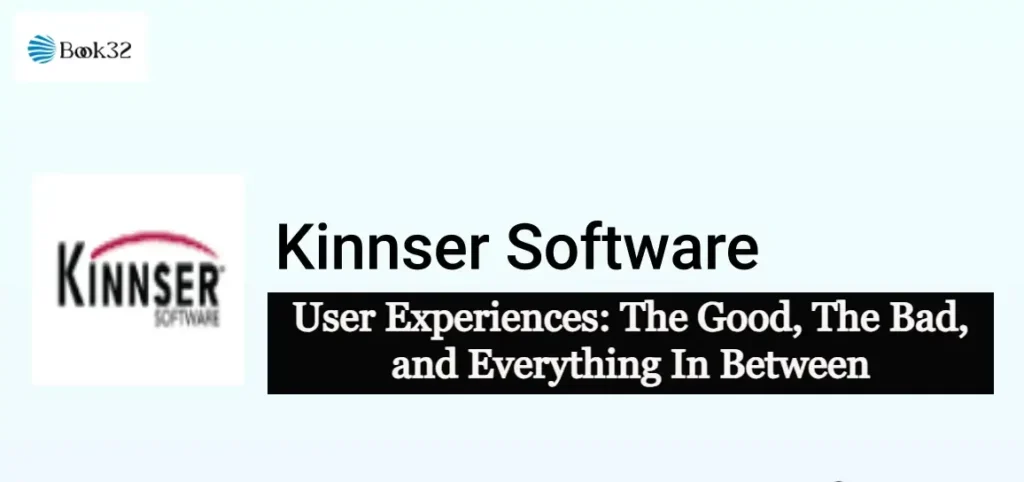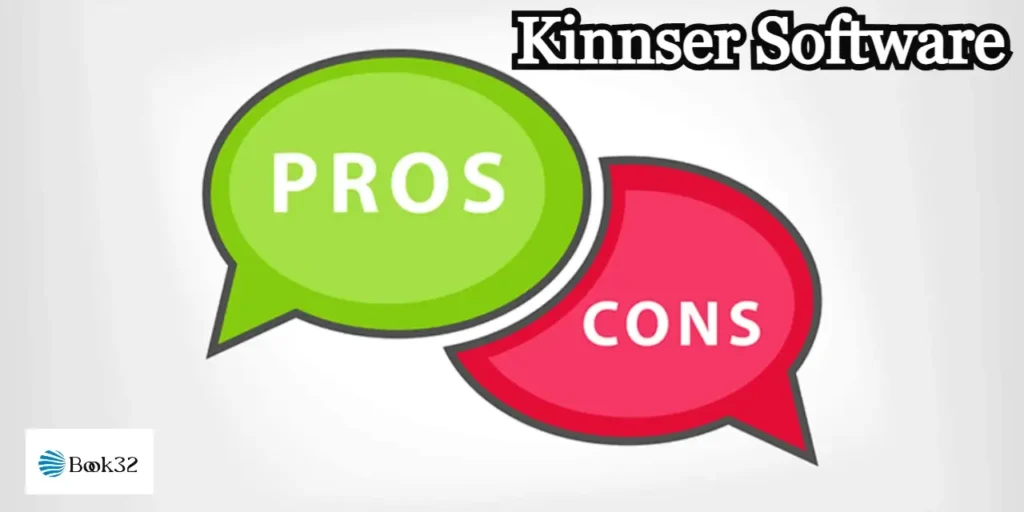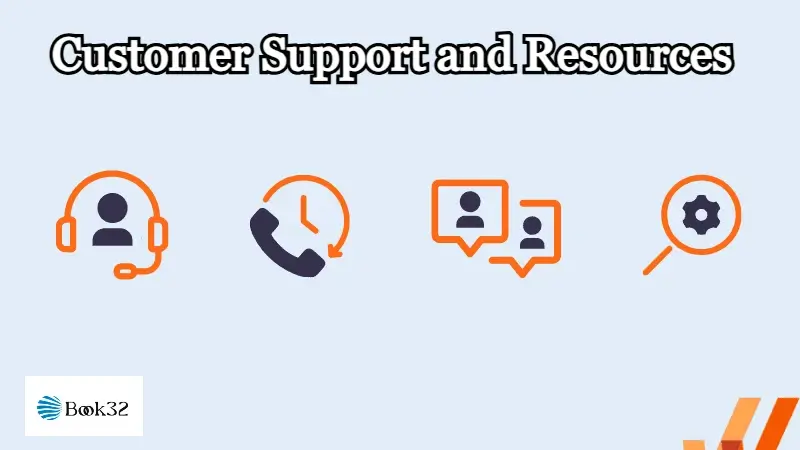Imagine running a healthcare facility where every detail matters, from patient records to billing. As a healthcare provider, your choice of software can make or break your efficiency. This brings us to an interesting point of discussion: Kinnser Reviews. Users often share insights that can illuminate the strengths and weaknesses of software solutions. What are they saying about Kinnser? Let’s find out!
An Overview of Kinnser Software

Kinnser Software has carved out a significant space in the home health care sector. It offers a comprehensive platform designed to meet the unique needs of healthcare providers. But what exactly makes Kinnser stand out in a crowded market? Let’s explore.
Core Functionalities of Kinnser
Kinnser is built around several core functionalities that enhance patient management. These include:
- Patient Scheduling: Efficiently manage appointments and visits.
- Documentation: Streamlined electronic documentation for easy access and updates.
- Billing: Simplified billing processes that integrate with various payment systems.
- Reporting: Comprehensive reporting tools to track patient outcomes and operational efficiency.
These functionalities help healthcare providers deliver better care while reducing administrative burdens. You might wonder, how does this impact patient care? Well, it allows staff to focus more on patients rather than paperwork.
Target Audience and Market
The primary users of Kinnser include nurses, administrative staff, and healthcare organizations. These users benefit from a platform designed for their specific needs. Kinnser targets the home health care market, which has been growing significantly. With an aging population, the demand for home health services is on the rise. This makes Kinnser a vital tool for many providers.
Historical Background of the Kinnser Platform
Kinnser started its journey by specializing in home health care software. Over the years, it has evolved to meet the changing needs of the market. The founders recognized the challenges faced by home health agencies and set out to create solutions. Today, Kinnser is recognized as a leader in its field.
Key Features that Distinguish Kinnser
What sets Kinnser apart from other software solutions? Here are some key features:
- User-Friendly Interface: The platform is designed to be intuitive and easy to navigate.
- Mobile Access: Kinnser offers mobile capabilities, allowing staff to access information on the go.
- Customizable Workflows: Users can tailor workflows to fit the specific needs of their organization.
- Interoperability: Kinnser integrates with other healthcare systems, enhancing data sharing.
As one healthcare administrator noted,
‘Kinnser has been a crucial element in streamlining our patient management process.’
This emphasizes the software’s role in improving efficiency.
Technology Stack and Integrations Offered
Kinnser is built on a modern technology stack that supports its various functionalities. It utilizes cloud-based solutions, ensuring data is accessible from anywhere. This is particularly important in home health care, where staff are often on the move.
Moreover, Kinnser integrates with various third-party applications. This allows for seamless data transfer between systems, which is essential for comprehensive patient care. You might think, how does this benefit me? Well, it means less time spent on data entry and more time focused on patient interaction.
In summary, Kinnser Software stands out in the home health care market due to its tailored functionalities, user-friendly design, and strong integration capabilities. It’s a tool that empowers healthcare providers to improve patient care while managing operational efficiencies.
User Experiences: The Good, The Bad, and Everything In Between

User experiences with software can be a mixed bag. Some users rave about the benefits, while others share their frustrations. Let’s break down the common praises, frequent complaints, and how this software stacks up against its competitors.
Common Praise from Users
Many users appreciate the software’s user-friendly interface. It’s designed to be intuitive, making it easier for professionals to navigate. For instance, one occupational therapist mentioned,
‘The software has significantly eased my daily tasks.’
This sentiment is echoed by others who find that it saves time and reduces stress.
Another positive aspect is the customer support. Users often highlight how responsive the support team is. They feel reassured knowing help is just a call or click away. This can make a huge difference when time is of the essence.
Frequent Complaints and Issues
However, it’s not all sunshine and rainbows. Many users report technical glitches that disrupt their workflow. These issues can range from slow loading times to unexpected crashes. Frustrating, right? Imagine trying to complete a critical task, only to face a software hiccup.
Additionally, some users feel that the software lacks certain features that are available in competing products. This can lead to dissatisfaction, especially if they switched to this software expecting a comprehensive solution.
Comparison with Competing Software
When comparing this software to its competitors, the differences can be striking. Some competing software options offer more advanced functionalities. For example, they might include better reporting tools or integration capabilities. Users often weigh these factors when deciding which software best meets their needs.
Yet, despite these drawbacks, many users still prefer this software for its simplicity. Sometimes, less is more. If you need something straightforward, this could be the right choice for you.
Unique User Anecdotes
Real-life stories can add depth to the discussion. One user shared how the software helped streamline their patient scheduling process. They went from spending hours on manual entries to just a few clicks. This change not only improved their efficiency but also enhanced their interactions with patients.
Another user recounted a time when the software’s features allowed them to quickly access patient histories. This was crucial during a busy clinic day. Such anecdotes highlight how the software can positively impact daily operations.
Impact on Patient Care
Ultimately, the software’s impact on patient care cannot be overlooked. Many users report that by reducing administrative burdens, they can focus more on their patients. This shift can lead to better outcomes and higher patient satisfaction.
In summary, user experiences with this software are diverse. While many praise its ease of use and support, others express concerns about technical issues and feature limitations. It’s important to weigh these factors based on your specific needs.
Key Features of Kinnser Software
Kinnser Software is designed specifically for home health agencies. It offers a range of features that can significantly improve operational efficiency. Let’s take a closer look at some of the key functionalities that make Kinnser stand out.
1. Documentation and Record-Keeping Capabilities
One of the most crucial features of Kinnser Software is its documentation and record-keeping capabilities. It allows healthcare professionals to maintain accurate patient records easily. This is not just about efficiency; it’s also about compliance with healthcare regulations. Keeping detailed records is essential in ensuring that you meet the necessary standards. Wouldn’t you agree that having all patient information at your fingertips makes your job easier?
2. Billing and Claims Management
Billing can often be a headache for healthcare agencies. With Kinnser, you get billing and claims management tools that streamline this process. It automates many aspects of billing, reducing the chances of errors. You can manage claims efficiently, ensuring timely payments. This feature alone can save your agency a lot of time and money.
3. Mobile Access and Usability
In today’s fast-paced world, being mobile is a must. Kinnser understands this need. Its mobile access and usability feature allows healthcare professionals to access vital information on the go. Imagine being able to update records while visiting a patient. As one home health nurse put it,
‘The mobile app allows me to update records while on the go, such a relief!’
This functionality not only enhances productivity but also improves patient care.
4. Communication Tools for Healthcare Teams
Effective communication is key in healthcare settings. Kinnser offers communication tools that facilitate easy interaction among team members. Whether it’s sending messages, sharing updates, or discussing patient care plans, these tools ensure everyone is on the same page. This can lead to better coordinated care for your patients.
5. Reporting and Analytics Features
Data is powerful. Kinnser’s reporting and analytics features allow you to generate insightful reports on various aspects of your agency. You can track performance metrics, patient outcomes, and financial data. This information helps you make informed decisions. Wouldn’t you want to know how your agency is performing in real-time?
6. Compliance with Healthcare Regulations
All these features are designed with healthcare regulatory compliance in mind. Kinnser Software ensures that you maintain the necessary standards and avoid penalties. This is crucial in today’s healthcare environment, where regulations are constantly changing. Being compliant not only protects your agency but also builds trust with your patients.
7. The Importance of Mobile Functionality
In modern healthcare, the importance of mobile functionality cannot be overstated. Patients are often seen in various locations, and having access to software on mobile devices means that healthcare professionals can provide better care. The ability to update records, communicate with team members, and access patient data while on the move is a significant advantage.
Pros and Cons of Using Kinnser

When considering software for your home health agency, it’s important to weigh the pros and cons. Kinnser is a popular choice, but like any tool, it has its strengths and weaknesses. Let’s take a closer look at what Kinnser offers and where it might fall short.
A Detailed Look at the Strengths
Kinnser shines in several areas. Here are some notable strengths:
- Efficient Billing: One of Kinnser’s standout features is its billing capabilities. As one Home Health Manager stated,
‘Kinnser’s billing capabilities save hours each week!’
This efficiency can significantly reduce administrative burdens. - User-Friendly Interface: Many users appreciate its intuitive design. You can navigate through tasks without feeling overwhelmed.
- Comprehensive Documentation: Kinnser provides extensive documentation and support. This can help you troubleshoot issues quickly.
Critical Gaps or Areas Needing Improvement
While Kinnser has many strengths, it’s crucial to identify areas where it may not meet your needs. Some users have pointed out:
- Limited Customization: Some features may not be customizable enough for specific workflows.
- Occasional Technical Glitches: Users have reported some bugs that can disrupt workflow.
- Learning Curve: Although the interface is user-friendly, new users may still experience a learning curve.
User Testimonials Supporting Claims
Testimonials can provide valuable insight into user experiences. Many users have shared their positive experiences with Kinnser:
- Improved Efficiency: Users often mention how the software streamlines processes.
- Reliable Customer Support: Many appreciate the quick responses from support staff when issues arise.
However, not all feedback is glowing. Some users have voiced concerns about the software’s limitations in specific areas.
Comparative Strengths to Other Software
When comparing Kinnser to other software options, it holds its own in several aspects:
- Cost-Effectiveness: Kinnser often comes at a lower price point than competitors, making it accessible for smaller agencies.
- Specialization: Kinnser is tailored specifically for home health agencies, unlike some more generalized software solutions.
However, it’s wise to consider what specific features you need. Other software might offer more extensive customization or advanced analytics.
Cost Versus Value Analysis
Understanding the cost versus value of Kinnser is essential for making an informed decision:
- Affordable Pricing: Kinnser is often seen as budget-friendly, which is a significant advantage for smaller agencies.
- Value in Time Savings: The efficiency gains in billing and documentation can translate to significant time savings, which adds value beyond the initial cost.
Ultimately, evaluating whether Kinnser provides sufficient value for its cost depends on your agency’s specific needs and budget.
While Kinnser has numerous strengths, identifying its weaknesses can be equally important for prospective users. By weighing the pros and cons, you can make a more informed choice that aligns with your agency’s goals.
Customer Support and Resources

When you choose software like Kinnser, one of the most critical aspects to consider is the level of customer support offered. After all, you want to ensure that you can get help when you need it. But what does good customer support look like? Let’s break it down.
1. Availability and Responsiveness of Support Staff
Imagine you’re in the middle of a task and suddenly hit a snag. You need help fast! A support team that is readily available can make all the difference. This means having multiple ways to reach them—like phone, email, or chat. The quicker they respond, the less time you’ll waste. You want to feel like your questions matter.
‘Their support team is just a call away, which is comforting.’ – Home Care Provider
2. Training Resources for New Users
Starting with new software can feel overwhelming. That’s where training resources come in. Good software should offer tutorials, webinars, and user manuals that cover the basics. These resources help you get up to speed quickly. They can turn a steep learning curve into a gentle slope.
3. User Community and Forums
Sometimes, you might have questions that aren’t covered in the training materials. This is where a strong user community shines. Forums allow you to connect with other users. You can share tips, ask questions, and find solutions together. It’s like having a network of friends who are all learning the same software.
4. Regular Updates and Improvements
Software is never truly finished. Regular updates keep the software running smoothly and add new features. This shows that the company is committed to improving the user experience. You want to know that the software you’re using will evolve with your needs.
5. Feedback Channels for Users
Your opinion matters! Feedback channels let you voice your thoughts on the software. Whether it’s a simple suggestion or a bug report, having a way to communicate your needs is essential. Companies that listen to their users often create better products. You can feel like part of the development process.
Why Support Quality Matters
The quality of customer support can heavily influence your satisfaction. If you struggle with the software and can’t get help, frustration builds. On the other hand, excellent support can enhance your experience greatly. It’s not just about fixing problems; it’s about making you feel valued as a customer.
Resources to Mitigate Learning Curves
Learning new software doesn’t have to be a daunting task. With the right resources, you can navigate the system with ease. Training materials and community support can make the transition smoother. They can turn what seems like a mountain into a series of manageable hills.
In summary, customer support and resources are vital components of your experience with Kinnser. The availability of support staff, training resources, a user community, regular updates, and feedback channels all contribute to a more satisfying user experience. So, when choosing software, don’t overlook these elements. They can make all the difference in how you feel about your choice.
Real-World Impact: Case Studies of Kinnser Users
When it comes to healthcare technology, real-world impacts speak volumes. Case studies of Kinnser users provide a window into how this software transforms operations. Let’s explore some success stories, challenges, and the lessons learned along the way.
Success Stories from Satisfied Clients
Many clients have shared their success stories after adopting Kinnser. For instance, one home health agency reported a significant improvement in patient management. Their Director of Nursing stated,
‘Switching to Kinnser transformed our operations.’
This kind of feedback is not uncommon. Clients frequently highlight how Kinnser has streamlined their processes, making it easier for staff to focus on patient care.
Challenges Faced and Overcome
Every new system comes with its challenges. Some users initially struggled with the transition to Kinnser. Staff had to adapt to new workflows and learn the software’s features. However, with training and support, these hurdles were overcome. The key was communication and a willingness to adapt. As users became more familiar with Kinnser, they discovered how it could simplify their daily tasks.
Quantifiable Results from Adopting Kinnser
The results speak for themselves. Many organizations have reported measurable improvements after implementing Kinnser. Here are some examples:
- Reduced paperwork: Agencies experienced a 30% decrease in time spent on documentation.
- Increased patient visits: Some reported a 20% boost in the number of patients they could serve.
- Improved compliance: Kinnser helped organizations achieve higher compliance rates with regulatory requirements.
These quantifiable results illustrate how Kinnser not only enhances efficiency but also positively impacts patient care.
Diverse Healthcare Settings Analyzed
Kinnser is not limited to one type of healthcare setting. Users come from various backgrounds, including home health agencies, hospice care, and skilled nursing facilities. Each setting has unique needs, and Kinnser has proven adaptable. For instance, a hospice provider found that Kinnser helped them manage sensitive patient information while ensuring compliance with regulations. The software’s flexibility allows it to meet the demands of diverse healthcare environments.
Lessons Learned from User Experiences
What can we learn from these experiences? First, it’s essential to engage staff during the transition. Their input can identify potential challenges early on. Second, ongoing training is crucial. Regular sessions keep staff updated on new features and best practices. Lastly, communication is key. Keeping everyone informed fosters a collaborative environment, making the transition smoother.
In summary, the case studies of Kinnser users reveal a wealth of insights. From success stories and challenges to measurable results, the impact of Kinnser in real-world settings is undeniable. By analyzing these experiences, you can see how Kinnser not only changes operations but also improves patient care across diverse healthcare settings.
FAQ
When considering new software, you might have many questions. Kinnser Software is no different. Let’s take a closer look at some of the most common queries potential users have.
1. Is Kinnser easy to integrate with existing systems?
Integration is a big deal. No one wants to deal with complicated setups. The good news is that Kinnser is designed to work well with various existing systems. It offers APIs that allow for smooth connections. This means you can keep your current tools while adding Kinnser to your workflow. Imagine adding a new piece to a puzzle without forcing the pieces to fit. That’s how Kinnser aims to function.
2. What kind of training resources are available?
Training is crucial when adopting new software. Kinnser understands this and provides a range of resources. You can find:
- Online tutorials: Step-by-step guides to help you get started.
- Webinars: Live sessions where experts share tips and tricks.
- Customer support: A dedicated team ready to assist you with any questions.
These resources are designed to make your transition smoother. You won’t feel lost when using Kinnser.
3. What is the pricing structure?
Pricing can be a deal-breaker. Kinnser offers flexible pricing options. It usually depends on the size of your organization and the specific features you need. You can choose a plan that fits your budget. Transparency is key here; you can easily find detailed pricing information on their website. No hidden fees or surprises!
4. Are there any notable security features?
Security is a top priority for any software, especially in healthcare. Kinnser takes this seriously. The software includes features like:
- Data encryption: Protects sensitive information.
- User authentication: Ensures that only authorized personnel can access the system.
- Regular security updates: Keeps the software secure against new threats.
These features help ensure that your data remains safe. You can focus on your work without worrying about security breaches.
5. How often is the software updated?
Software updates are important for functionality and security. Kinnser regularly updates its software to enhance performance and introduce new features. You can expect updates several times a year. This commitment to improvement means you’ll always have access to the latest tools and security measures.
Addressing these FAQs helps clear up any concerns you might have about Kinnser Software. Clear answers can support informed decisions. If you’re considering Kinnser, knowing the facts can help you feel more confident in your choice.
Conclusion
As we wrap up our exploration of Kinnser reviews, it’s clear that user feedback presents a mixed bag of insights. Some users praise Kinnser for its user-friendly interface and robust features. Others, however, highlight certain limitations that could impact their experience. This balance is crucial for you to consider.
Key Insights from User Feedback
Many users appreciate Kinnser’s efficiency in streamlining home health care processes. They commend its ability to manage patient records and billing seamlessly. However, some users report occasional glitches and a steep learning curve. This feedback serves as a reminder that while Kinnser has its strengths, there are areas needing improvement. Understanding these insights can help you make an informed decision.
Recommendations for Prospective Users
If you’re considering Kinnser, it’s wise to assess your specific needs. Are you looking for a simple solution, or do you require advanced features? Tailor your expectations accordingly. Additionally, reach out to current users for their firsthand experiences. Their insights can provide valuable context that online reviews might not capture.
The Importance of Reading Multiple Reviews
Before making any decisions, it’s beneficial to read various reviews. One review may highlight a feature you find essential, while another might point out a dealbreaker. By gathering diverse perspectives, you can form a more holistic view of Kinnser. Think of it like shopping for a new car; you wouldn’t just test drive one model, right?
Trial Periods: A Smart Move
Whenever possible, take advantage of trial periods. Many software providers, including Kinnser, offer free trials. This allows you to test the software in your environment. You can see how it integrates with your workflow. It’s a low-risk way to determine if Kinnser is the right fit for you. Don’t skip this step!
Share Your Experiences
Your experiences matter. If you’ve used Kinnser, consider sharing your story. Did it meet your expectations? Were there surprises, good or bad? Your insights could help others in their decision-making process. Engaging with the community not only helps potential users but can also foster improvements in the software itself.
In conclusion, Kinnser, like any software, has its successes and areas for improvement. Understanding both sides helps guide your decisions. By summarizing key insights from user feedback, making informed recommendations, and encouraging engagement, we hope this conclusion empowers you to explore Kinnser further. Remember, the best decisions come from informed choices and shared experiences.
